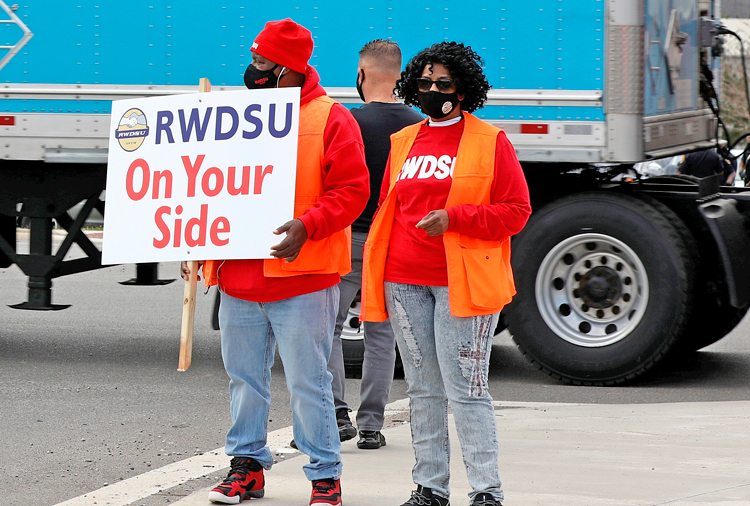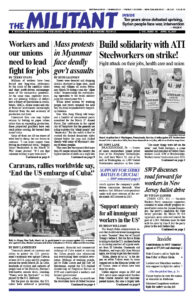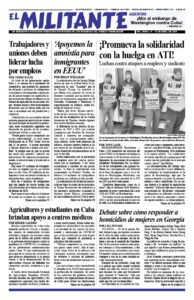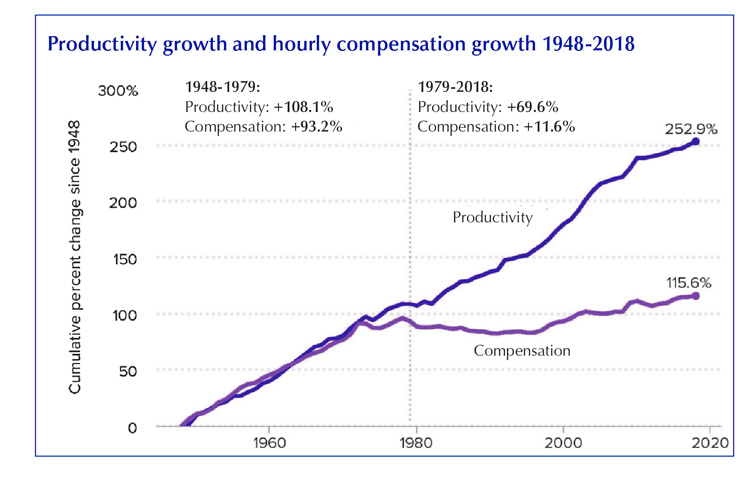Millions of workers have been forced into long-term joblessness by the crisis of the capitalist rulers and their profit-driven mismanagement of the coronavirus pandemic. At the same time, capitalist investors are plowing trillions of dollars into a frenzy of speculation in stocks, bonds, SPACs, online scams and other financial instruments increasingly divorced from the real economy of production and trade.
Convinced they can reap higher returns by betting on paper values rather than on expanding production, these propertied gamblers have sent stock prices soaring, far beyond their actual value.
Some of them are all too aware of what they’re doing, but are driven to continue. “I can make money from buying an overpriced stock,” bragged James Mackintosh in the March 25 Wall Street Journal, “if I can find someone willing to pay even more.”
But “the danger is that we run out of greater fools,” he warned nervously. At some point, the bottom will fall out and the market will plummet.
For the working class some 9.5 million more workers remain out of work than a year ago. The government, which undercounts the real figures, says 18.2 million workers are getting unemployment benefits today.
The media heralded the drop of new unemployment claims to a year’s low of 684,000 for the week ending March 20. But this figure excludes both self-employed workers, who claim benefits under different pandemic relief programs, and workers who have given up looking for a job altogether. More than 4 million workers have been dropped from the workforce since February 2020.
Ford announced it was cutting the number of shifts at its truck plant in Louisville, Kentucky, and shutting down production at its Avon Lake, Ohio, assembly plant, blaming it on a shortage of parts. Laid-off workers get 75% of their wages, but the growing number of workers hired on temporary contracts are left to fend for themselves.
In their drive to cut costs to boost profits, the bosses in recent years have turned to just-in-time inventory operations. But this leaves them vulnerable to any disruption in global supply chains. This was exacerbated by the closure of the Suez Canal last week after a mammoth container ship ran aground. The Ever Given blocked the canal, which is used by 13% of worldwide maritime trade. Bosses say production will be affected, even after the boat was refloated March 29.
Hiring should pick up as more workers get access to vaccination and the bosses see prospects to profit by putting more of us to work. Both of these things will be good for working people. Every worker should seek to fight their way through the infuriating maze of capitalist disorganization to get the shot. Back on the job, workers will feel increasingly confident in joining together to stand up to bosses’ attacks on wages and conditions and fight for what we need.
Capitalists’ speculative binge

While offering welfare-type one-time handouts, the Joseph Biden administration has done nothing to reverse long-term unemployment. And capitalist coupon clippers have turned increasingly to gambling.
To stay afloat and refinance rising debts, company owners issued a record $140 billion in junk bonds over the last three months, enticing investors to buy higher yielding but riskier forms of debt. This includes those gambling with pension funds that hold workers’ futures.
The current giddy surge in stock prices is nothing new. Driven by the need to compete with rivals or go under, the ruling capitalist families act pragmatically. Their current frenzy of spending on all types of financial paper is simply an effort to maximize their profits regardless of the consequences for their capitalist economy or for working people.
“The exploiters are sinking their capital into ‘labor saving’ retooling and speculative paper claims on values because they can get a better rate of return there than from investments in building new factories, installing major new technologies, and hiring on large amounts of additional labor power,” explains the Socialist Workers Party’s resolution “What the 1987 Stock Market Crash Foretold.” It can be found in New International no. 10.
This has remained true despite successive governments — Democrat and Republican alike — holding down the cost of borrowing by keeping interest rates near or at zero.
No better example of speculative mania exists than the soaring prices of so-called cryptocurrencies. Bitcoin has surged in value some 990% in the past year.
These digital tokens were hyped by their meritocratic designers as a transnational alternative to paper currencies, which are ultimately based on the country’s productive capacity. But bitcoins aren’t based on anything in the real world, and remain largely an object of speculation. Unlike the dollar or any other country’s currency, the economic and military might of a capitalist class does not stand behind digital currencies.
That hasn’t stopped central banks from trying to get in on the speculative boom. Federal Reserve Chairman Jay Powell says Fed officials are considering whether they can issue a dollar-based digital currency.
Alongside persistent unemployment, workers face an assault on another front — rising prices of basic necessities that make up a large chunk of our regular expenses. Food prices rose 3.9% last year. The Department of Agriculture predicts they’ll rise at least another 3% this year.
Rival capitalist rulers worldwide, fearing they’ll lose ground in cutthroat competition, are printing money like crazy, hoping to goose up production, purchases and profits. “Inflation has not come back,” the Financial Times pontificates. “It may never do so.” This flies in the face of history.
For millions of workers facing job cuts, furloughs and attacks on their wages, real inflation in basic necessities we need today wreaks havoc in our lives.
“For workers and farmers and other exploited producers there is no way to prevent rising prices,” Malcolm Jarrett, Socialist Workers Party candidate for Pittsburgh mayor, told the Militant. “But on the job we do have the power to stand together and fight for cost-of-living clauses in every union contract that raise pay and retirement benefits every time prices go up.
“The SWP calls for our unions to fight for a government-funded public works program to create millions of jobs at union-scale wages to build hospitals, schools, child care centers and other things working people need,” he said.
“My party campaigns to organize working people to support each others’ struggles,” Jarrett said. “This is how we can pave the way for building the fighting labor movement we need and lead millions of the exploited to fight to take political power into our own hands.”


